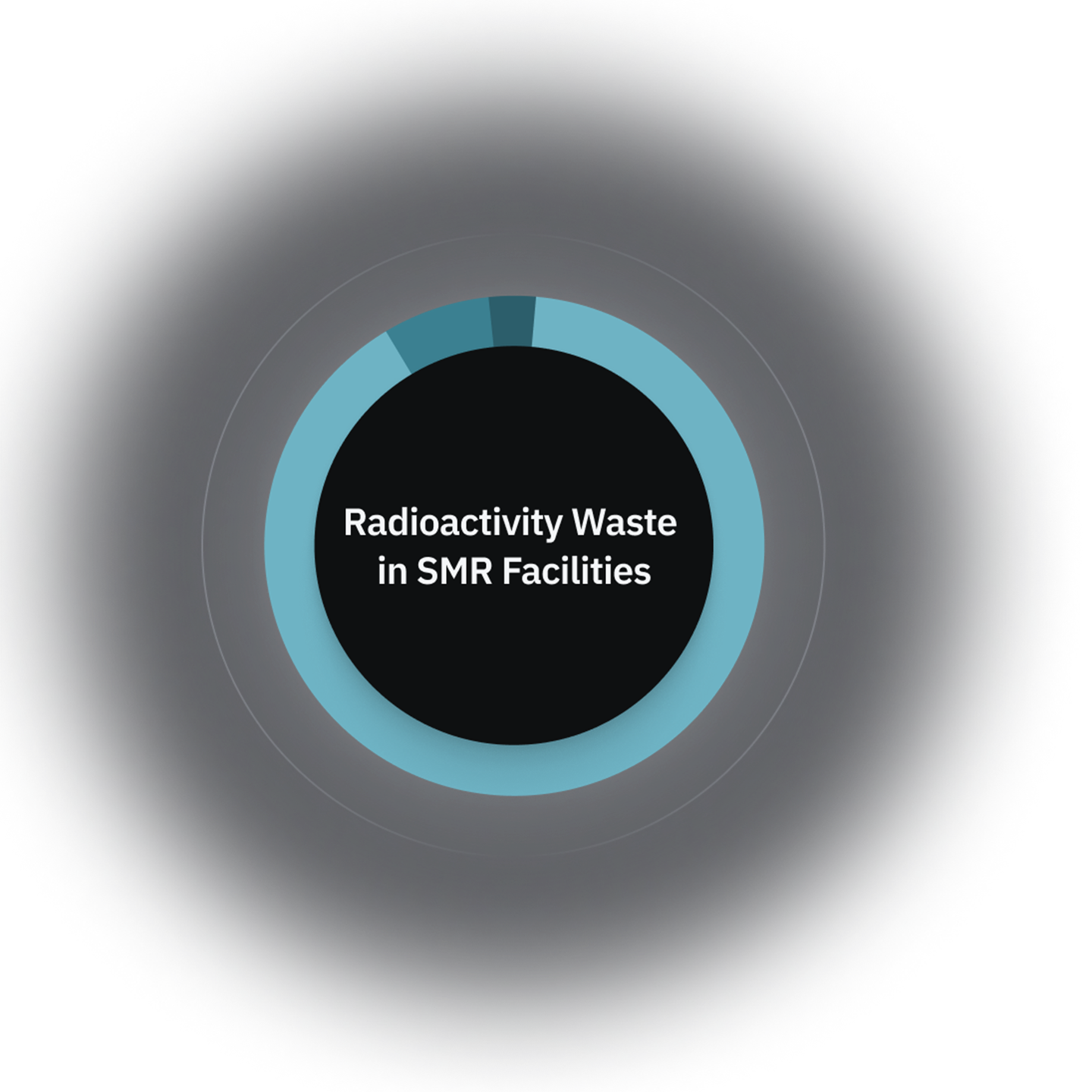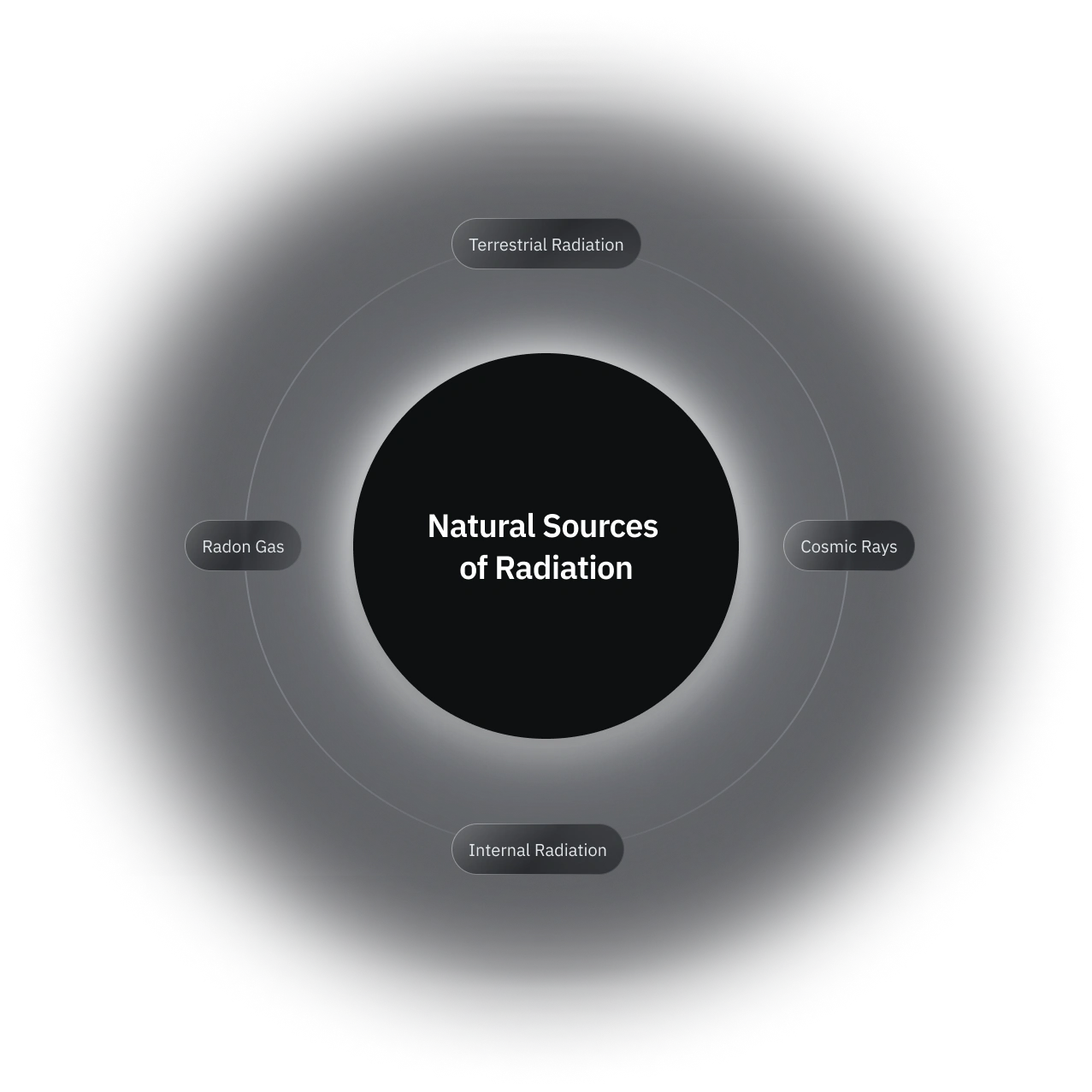Discover the journey of nuclear fuel and the impacts of radioactivity.
Stages of the Fuel Cycle
1. Fuel Preparation
The fuel cycle starts with the mining of uranium and ends with the disposal of spent material that is no longer usable. The raw material for today’s nuclear fuel is mainly uranium.
2. Service Period
It must be processed through a series of steps to produce an efficient fuel for generating electricity.
3. Tail End
Spent fuel is managed responsibly through storage, recycling, and final disposal.

Nuclear Fuel Cycle
The nuclear fuel cycle is a fascinating process that transforms natural uranium into a powerful energy source and ensures the responsible management of waste. Explore each stage in our interactive infographic.
1.
Uranium Extraction
Uranium, a naturally occurring element, is mined using open-pit, underground, or in-situ leaching methods. After extraction, it is processed into a concentrated form called yellowcake (U3O8), making it suitable for further refinement.
2.
Fuel Fabrication
The yellowcake is converted into uranium hexafluoride (UF6) gas, enriched to increase to its U-235 content, and then processed into solid uranium dioxide (UO2) pellets. These pellets are packed into fuel rods, which are assembled into fuel bundles for reactors.
3.
Energy Generation
Inside the reactor, controlled nuclear fission occurs, splitting uranium atoms and releasing heat. This heat produces steam that drives turbines, generating electricity. Some reactors also provide direct heat for industrial or district heating applications.
4.
Spent Fuel Storage
After use, the fuel rods are removed from the reactor and initially stored in water pools to cool and shield radiation. Once sufficiently cooled, they can be transferred to dry cask storage for longer-term containment.
5.
Reprocessing & Recycling
Some spent fuel contains usable uranium and plutonium, which can be chemically separated and reused to produce new fuel. Recycling reduces waste and increases the efficiency of nuclear energy production.
6.
Final Disposal
Remaining high-level waste is securely stored deep underground in stable geological formations. These sites are designed to contain and isolate radioactive material safely for thousands of years, preventing any impact on people or the environment.
What about radiation?
Radiation is part of our natural world – It’s in the earth, the air and even our bodies.
Radiation in Everyday Life
Radiation is a natural part of our world, from cosmic rays to elements in the Earth’s crust and even within our own bodies. Activities like flying or medical imaging add small doses of radiation, but these levels are carefully managed and harmless, much like a warm bath.
Safe vs. Harmful Radiation
The difference between safe and harmful radiation lies in the dose. Low doses are manageable and pose no risk, while high doses can cause harm, similar to how hot water can scald. Science and technology allow us to monitor and control exposure, ensuring safety in fields like medicine and energy.
Radiation in Nuclear Facilities
Radiation in nuclear facilities is strictly controlled to ensure safety, minimize risks, and maintain reliability through regulated protective measures.
Comparing Radiation Levels
The bar chart below provides a clear comparison of radiation levels from different sources, helping to put nuclear energy into perspective.

Measuring Radioactive Waste
Radioactive waste is carefully measured by volume and classified tino low, intermediate, and high-level categories based on its radioactivity and heat generation.
In modern SMR facilities, about 90% of the waste is low-level, such as protective clothing and tools, with only 3% classified as high-level waste, which is securely stored in long-term facilities.
Compared to other energy sources, SMRs produce significantly smaller waste volumes. With advanced recycling methods, SMRs further reduce waste by reprocessing spent fuel into new energy, showcasing their efficiency and environmental responsibility.
3% High Level Radioactivity
7% Medium Level Radioactivity
90% Low Level Radioactivity

